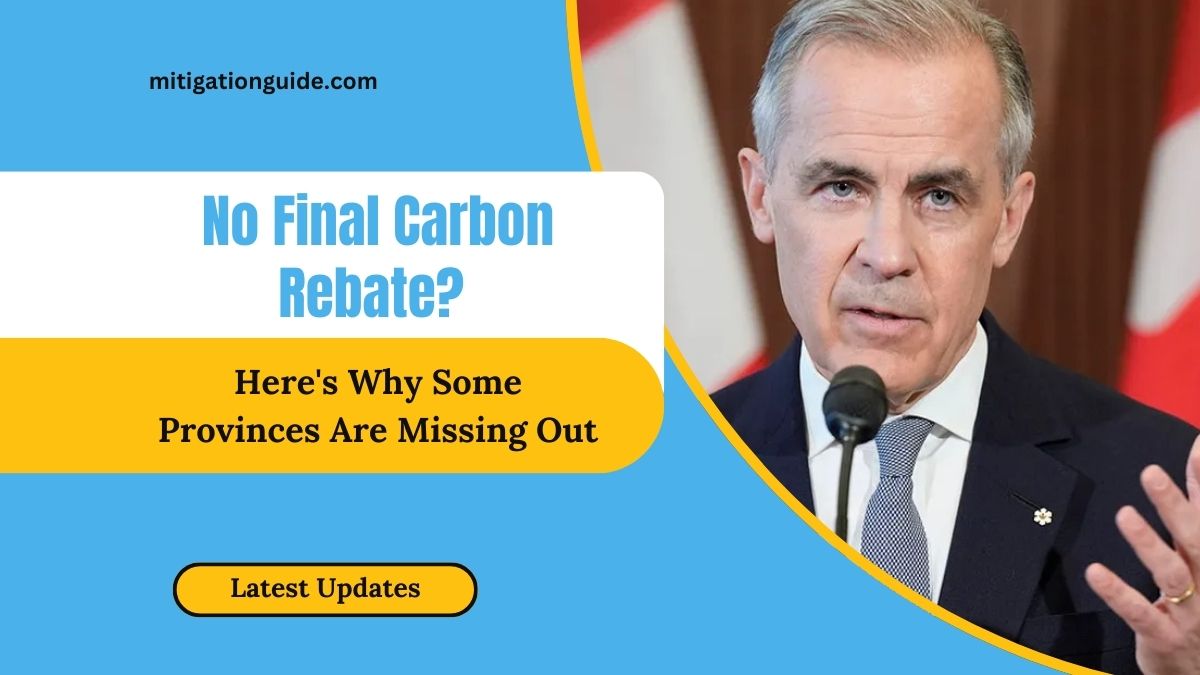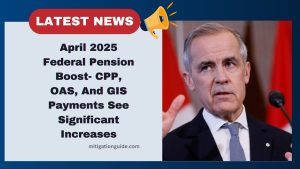As Canada phases out the federal carbon tax rebate program, many Canadians are wondering why some provinces are still receiving a final Canada Carbon Rebate (CCR) payment, while others are not.
This article breaks down who gets the payment, why others are excluded, and what Canadians should know heading into 2025.
What Is the Canada Carbon Rebate (CCR)?
The Canada Carbon Rebate is a tax-free quarterly payment designed to help households offset the rising cost of carbon pollution pricing.
It replaced the Climate Action Incentive in 2023 and is distributed through the Canada Revenue Agency (CRA) to individuals in provinces where the federal carbon pricing system is applied.
Which Provinces Will Get the Final CCR Payment in 2025?
Not all provinces participate in the federal fuel charge, which determines eligibility for the CCR. As of April 2025, the final CCR payment is being sent to residents in the following eight provinces:
- Alberta
- Saskatchewan
- Manitoba
- Ontario
- New Brunswick
- Nova Scotia
- Prince Edward Island
- Newfoundland and Labrador
These provinces used the federal carbon pricing system, making their residents eligible for the rebate.
Why Some Provinces Are Missing Out
Residents in the following provinces and territories will not receive the final carbon rebate:
- British Columbia
- Quebec
- Northwest Territories
- Yukon
- Nunavut
These regions operate their own carbon pricing programs, which meet or exceed the federal requirements. As a result, they did not participate in the federal carbon pricing system and are therefore ineligible for the Canada Carbon Rebate.
How Much Will You Receive in April 2025?
The final payment amounts vary by province, family size, and whether you live in a rural area, which qualifies you for a 20% rural supplement. Here’s a breakdown:
| Province | Individual | Spouse/Partner | Per Child | Rural Supplement |
|---|---|---|---|---|
| Alberta | $228 | $114 | $57 | +20% |
| Ontario | $151 | $75.50 | $37.75 | +20% |
| Manitoba | $150 | $75 | $37.50 | +20% |
| Saskatchewan | $206 | $103 | $51.50 | +20% |
| New Brunswick | $92 | $46 | $23 | +20% |
| Nova Scotia | $103 | $51.50 | $25.75 | +20% |
| Newfoundland & Labrador | $164 | $82 | $41 | +20% |
| Prince Edward Island | $110 | $55 | $27.50 | Already Included |
What About Alternative Support in Non-Eligible Provinces?
Provinces like British Columbia and Quebec offer their own rebate programs under separate provincial systems. These systems are tailored to their respective carbon pricing models and are often distributed through provincial tax credits or utility offsets.
Impact on Canadians in 2025
With the final CCR rolling out in April 2025, Canadians in eligible provinces will see one last boost to help with energy and fuel costs.
However, those in non-participating provinces must rely on local provincial initiatives, which may differ in value, timing, and structure.
The Canada Carbon Rebate served as a vital tool to support families impacted by federal carbon pricing. As the program concludes in April 2025, residents in certain provinces will benefit from one last payment, while others must turn to their provincial programs for relief.
It’s important to understand your province’s carbon pricing approach to know where you stand in 2025 and beyond.
FAQs
Why am I not receiving the carbon rebate in April 2025?
If you live in a province that operates its own carbon pricing system (like British Columbia or Quebec), you’re not covered under the federal CCR.
How do I know if I qualify for the rural supplement?
You qualify if your principal residence is located in a rural or small community. You must indicate this on your tax return to receive the additional 20%.
Will the CCR continue beyond April 2025?
No, April 2025 marks the final payment of the Canada Carbon Rebate under the current federal system.




